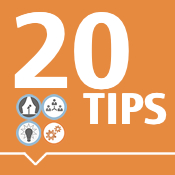Watch Tutorial Videos created for edConnectr’s users. Created by @snbeach and @MarkSylvester
The 2010 National Education Technology Plan demonstrates the importance of educators becoming more connected to resources, tools, colleagues, experts, and learning activities, both within and beyond schools. Participation in online communities of practice is a key way educators connect. Robust online participation contributes both to individual excellence and to the vitality of the profession as a whole. The Connected Online Communities of Practice project has stewarded a scalable, sustainable ecology of online communities in education to improve teacher and leader effectiveness, enhance student learning and increase productivity. [Read more…]CASE STUDY: How Do You Connect the most Connected Educators in the Nation?
The National Education Technology Plan, Transforming American Education: Learning Powered by Technology, calls for applying the advanced technologies used in our daily personal and professional lives to our entire education system to improve student learning, accelerate and scale up the adoption of effective practices, and use data and information for continuous improvement.

 Is this you? Your team is getting ready to invest in a Business Social Network. You realize that this platform has the potential to become a major asset for your enterprise, and you want to set your Network apart from competitors’.
You know all of the buzzwords. You know that you’re going to have to:
Is this you? Your team is getting ready to invest in a Business Social Network. You realize that this platform has the potential to become a major asset for your enterprise, and you want to set your Network apart from competitors’.
You know all of the buzzwords. You know that you’re going to have to:




